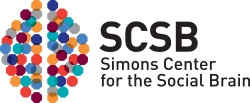Social network software to assist people with Autistic Spectrum Disorders
Henry Lieberman, PhD, Principal Research Scientist, MIT Media Laboratory
6/27/2014
Talk Title: Social Network Software to Assist People with Autistic Spectrum Disorders Speaker: Henry Lieberman, Ph.D., Principal Research Scientist, MIT Media Laboratory People with autistic spectrum disorders face a variety of mental health challenges, ranging from being victims of bullying, to loneliness and depression as a result of their differences. Those mental health problems disproportionately affect people with ASD spectrum conditions, and have significant negative impact on their overall health outcomes. The rise of social network software provides some new opportunities to provide assistance to people with difficulties, and to promote healthy relationships. Some ASD spectrum individuals find it easier to communicate online than face-to-face, encouraging socializing. Those seeking help for mental health problems can connect with others online who can provide social support or advice, or connect online with written, video, or live resources that can help them. We present several projects that use human-in-the-loop machine learning, commonsense reasoning, natural language understanding, and visualization to add “computational empathy” to social network software. The software helps identify and categorize problems or specific kinds of situations, and provides connection to appropriate people and resources. In collaboration with MTV, we worked on their Over the Line? site, on which youth describe possible cases of bullying or relationship issues, and have community discussion around whether the behavior described is acceptable. We implemented a story matcher that connects users with others who share their plight or can offer emotional support or advice. In collaboration with Crisis Text Line, we produced software that helps counselors on a text message hotline manage conversations, assess the kind and severity of problems, and co-develop action plans for the callers.
